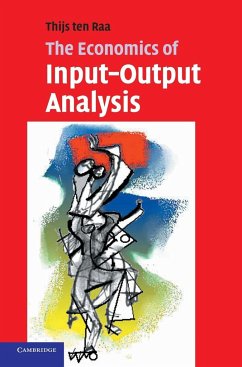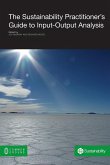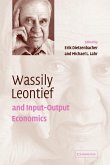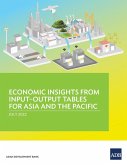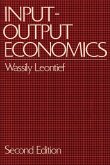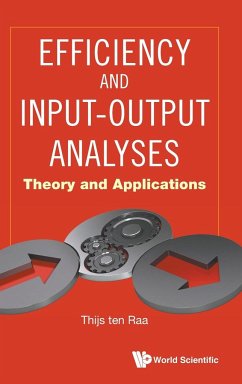A graduate-level textbook which surveys the most recent developments in input-output analysis and their applications.
Input-output analysis is the main tool of applied equilibrium analysis. This textbook provides a systematic survey of the most recent developments in input-output analysis and their applications, helping us to examine questions such as: Which industries are competitive? What are the multiplier effects of an investment program? How do environmental restrictions impact on prices? Linear programming and national accounting are introduced and used to resolve issues such as the choice of technique, the comparative advantage of a national economy, its efficiency and dynamic performance. Technological and environmental spillovers are analysed, both at the national level (between industries) and the international level (the measurement of globalisation effects). The book is self-contained, but assumes some familiarity with calculus, matrix algebra, and the microeconomic principle of optimizing behaviour. Exercises and review questions are included at the end of each chapter, and solutions at the end of the book.
Review quote:
'This book demonstrates the author's superior mastery and insights into the subject matter. Even those who have achieved mastery of input-output and linear programming analysis will find many valuable insights to add to their store of knowledge. This volume is a substantial addition to the literature.' William Baumol, New York University and Princeton University
'One great merit of this meticulous book is that it presents the input-output apparatus as a part of general equilibrium analysis, and therefore as part of mainstream economics rather than as just a free-standing technique. Another great advantage is that it connects up with the National Accounts at the other end. A careful student of this text will be thoroughly prepared to move on to applications.' Robert M. Solow, Department of Economics, MIT, and 1987 winner of the Nobel Memorial Prize in Economics
'Wassily Leontief defined and used input-output analysis in the modern era. He and his close followers took the subject far during the 20th century. Thijs ten Raa has taken the established system of economic analysis imbedded in input-output analysis and shown how it underlies the wide body of thought in the whole of the economy's supply side and production activities, both theoretical and applied, in a masterly treatment.' Lawrence R. Klein, University of Pennsylvania, and 1980 winner of the Nobel Memorial Prize in Economics
Table of contents:
Preface; 1. Introduction; 2. Input-output basics; 3. Multiplier effects; 4. Linear programming; 5. Are input-output coefficients fixed?; 6. The system of national accounts; 7. The construction of technical coefficients; 8. From input-output coefficients to the Cobb-Douglas function; 9. The diagnosis of inefficiency; 10. Input-output analysis of international trade; 11. Environmental input-output economics; 12. Productivity growth and spillovers; 13. The dynamic inverse; 14. Stochastic input-output analysis.
Hinweis: Dieser Artikel kann nur an eine deutsche Lieferadresse ausgeliefert werden.
Input-output analysis is the main tool of applied equilibrium analysis. This textbook provides a systematic survey of the most recent developments in input-output analysis and their applications, helping us to examine questions such as: Which industries are competitive? What are the multiplier effects of an investment program? How do environmental restrictions impact on prices? Linear programming and national accounting are introduced and used to resolve issues such as the choice of technique, the comparative advantage of a national economy, its efficiency and dynamic performance. Technological and environmental spillovers are analysed, both at the national level (between industries) and the international level (the measurement of globalisation effects). The book is self-contained, but assumes some familiarity with calculus, matrix algebra, and the microeconomic principle of optimizing behaviour. Exercises and review questions are included at the end of each chapter, and solutions at the end of the book.
Review quote:
'This book demonstrates the author's superior mastery and insights into the subject matter. Even those who have achieved mastery of input-output and linear programming analysis will find many valuable insights to add to their store of knowledge. This volume is a substantial addition to the literature.' William Baumol, New York University and Princeton University
'One great merit of this meticulous book is that it presents the input-output apparatus as a part of general equilibrium analysis, and therefore as part of mainstream economics rather than as just a free-standing technique. Another great advantage is that it connects up with the National Accounts at the other end. A careful student of this text will be thoroughly prepared to move on to applications.' Robert M. Solow, Department of Economics, MIT, and 1987 winner of the Nobel Memorial Prize in Economics
'Wassily Leontief defined and used input-output analysis in the modern era. He and his close followers took the subject far during the 20th century. Thijs ten Raa has taken the established system of economic analysis imbedded in input-output analysis and shown how it underlies the wide body of thought in the whole of the economy's supply side and production activities, both theoretical and applied, in a masterly treatment.' Lawrence R. Klein, University of Pennsylvania, and 1980 winner of the Nobel Memorial Prize in Economics
Table of contents:
Preface; 1. Introduction; 2. Input-output basics; 3. Multiplier effects; 4. Linear programming; 5. Are input-output coefficients fixed?; 6. The system of national accounts; 7. The construction of technical coefficients; 8. From input-output coefficients to the Cobb-Douglas function; 9. The diagnosis of inefficiency; 10. Input-output analysis of international trade; 11. Environmental input-output economics; 12. Productivity growth and spillovers; 13. The dynamic inverse; 14. Stochastic input-output analysis.
Hinweis: Dieser Artikel kann nur an eine deutsche Lieferadresse ausgeliefert werden.

